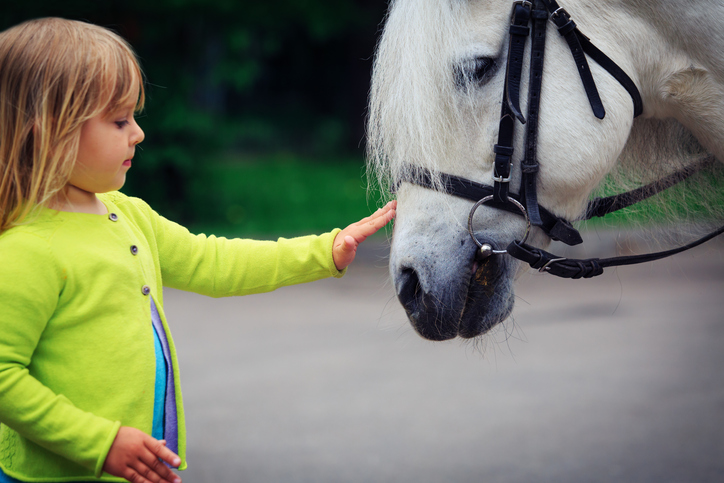Listen To Your Customers. They Will Tell You All About Equine TherapyListen To Your Customers. They Will Tell You All About Equine Therapy
You’ll be asked about a detailed history of your horse, including primary complaint, the type of work the horse does, medical history, any previous injuries, veterinary care, surgeries, medications, x-ray and/or flexion tests results. Chiropractic but not including acupuncture or aromatherapy. Physiotherapy is interpreted as including a range of manipulative therapies including osteopathy. However, now, a dozen years later, the NL approach is employed by a wide variety of professionals who partner with horses to serve their clients, including occupational therapists, speech and language therapists, and physical therapists. For more information on equine therapy in Victoria visit our website HamerEquineAssistedLearning.com.

What is equine therapy How does it work?
A client who has experienced child or domestic abuse might break down in tears upon seeing the horses frightened. It is very important to us that everyone who comes here feels safe and like they belong. Who doesn’t like horses? Just like us, horses greatly benefit from keeping physically tuned up with regular structural alignment and massage to help injuries heal and maintain optimal movement. Whether your horse is for pleasure or performance, keeping him structurally balanced improves his athleticism and well-being. Read more: https://hamerequineassistedlearning.com/contact-us/
The misaligned horse may be unable to pick up a lead or travels with an inverted frame, bucks or swishes his tail during transitions. When the spinal vertebrae are misaligned the nerves traveling out from the spinal cord become irritated and lose some ability to function properly. Spinal misalignment shows up in many ways, from obvious pain or lameness to changes in behavior such as when a good horse suddenly starts misbehaving.

Nerves effecting your horse’s internal organs may also be impeded in subtle ways, such as difficulty in gaining or holding weight or supressed vitality. Damage due to the added stresses of weight referral. Compensation and weight referral compound the issue until the horse that had just seemed slightly “off” is now truly uncomfortable or worse. It takes a special type of person and a special type of horse to work in the field of equine-assisted therapy. Upon completion of this programme learners will have encountered concepts that encompass all aspects of equine therapy from simple massage techniques to the use of sophisticated machines and equipment, and will be equipped to progress into this emerging field as an educated equine therapeutic practitioner.
What is equine therapy called?
Pleasure horses and companions are equally susceptible; rough-housing with herd mates at pasture, slips and falls, or that occasional weekend warrior ride on an unfit horse can have you scratching your head looking at a “mystery lameness”; your horse is no longer feeling or moving quite right. Horses are in nature very empathetic, and studies say that being around horses changes human brainwave patterns. “It is like an automatic biofeedback process with a sentient being.
Sport and performance horses, like any athlete, are subject to intense physical challenges and can easily misalign; the spine loses flexibility, muscles become stiff, and mobility is restricted. Tight or fatigued muscles are at higher risk of strains. Therapy Horse Children’s Books are available to organizations, schools and therapists as well as the general public. What we mean by this is that equine therapy is a form of therapy that uses live horses to help people get out of their minds and bodies and connect with their emotions.
However, an equine therapy program therapist can ensure that you get the most out of your time with the horse. Equine therapy works well even if you aren’t a horse person. By caring for and connecting with horses, they experience a wide range of equine therapy benefits. This therapy program is designed to bring healing, comfort and to improve the quality of life for any and all horses, whether your equine partner is a fuzzy best friend in the backyard or the highest calibre of competing athlete.
The program “has helped me to connect the information I’ve learned in the classroom with real everyday life experiences,” says U.S. All program materials are sent to the student’s home. While it is similar to workplace training, it is usually focused on the individual and the goals that are chosen. The Department of Addiction Treatment (Youth)’s treatment is a person-centerd program comprising individual and group therapy based on a biopsychosocial model with emphasis on mentalization-based theory and practice.30 Patients enter the program after detoxification.
How does therapy help? With equine therapy activities lead by a mental health therapist and equine specialist we are able to help guide you to overcome these symptoms, recover motivation, perspective, and guide you through the process of healing. We recommend that applicants contact a specialist insurance broker for advice regarding appropriate insurance. Who is allowed to perform physiotherapy. With regard to who is allowed to perform physiotherapy and under what circumstances, the Veterinary Surgery exemption order (1962) allows for the treatment of animals by “physiotherapy”, provided that the animal has first been seen by a veterinary surgeon who has diagnosed the condition and decided that it should be treated by physiotherapy under his or her direction.
There is no legal requirement to train as a human physiotherapist in order to work as an animal physiotherapist. Chartered physiotherapists are registered but only in their capacity as a human physiotherapist – not as an animal physiotherapist. Working with a 1,000-pound animal can seem intimidating, but the horses used in these sessions are well-grounded, calm, and not easily startled or likely to cause harm. It provides the client and therapist important insights for achieving goals and working towards self-improvement.
With the support of an expert therapist and a trained therapy horse whose genuineness and affection help allay these fears, children are empowered to embrace therapy to diminish anxiety. Equine therapy is an alternative multimodal intervention that involves utilizing a horse to enhance core impairments in ASD. It is the responsibility of any international student who wishes to study this programme to research the laws residing around practising equine physiotherapy in their own country.
The Equine Physiotherapy Diploma Programme has been designed to meet the needs of learners aiming to work in the field of equine physiotherapy with particular reference to UK laws. Training relating to the field of equine physiotherapy. The term ‘Chartered’ relates to the field of human physiotherapy; there isn’t a charter relating to animal, equine or veterinary physiotherapy. Located at Maryland’s Fair Hill Training Center, we have access to 24 hour veterinary services and are within easy reach of all major vet clinics and racetracks of the Northeast and Mid-Atlantic regions.
Injured money with paralyzed skeletal system may pass on deformed and highly distorted versions of genes which may lead to mutation of their off springs and destroy a complete breed of money which otherwise would have made a mark in the racing industry. Reiki works to enhance the body’s natural healing response and to calm the nervous system – and horse, allowing the body to accept the changes more readily. Like our Facebook page!
RELATED ARTICLES
- https://www.webmd.com/mental-health/what-is-equine-therapy-equine-assisted-therapy
- https://flip.it/JHFGmL
- https://businessblog.contently.com/



